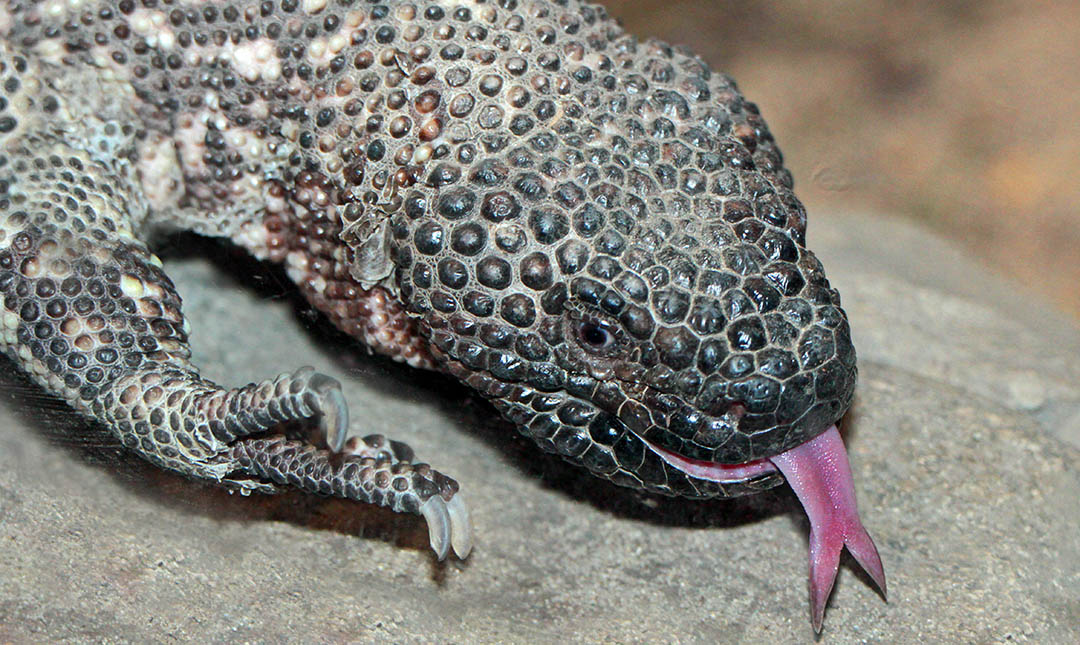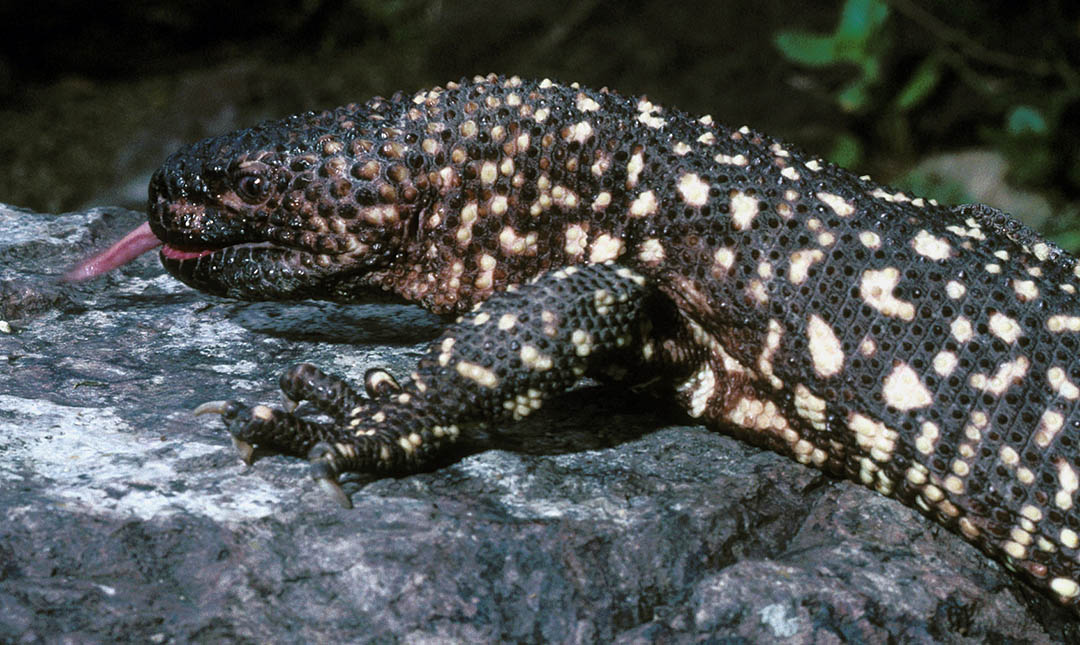About
This lizard shares many characteristics with its close relative, the more famous Gila monster. These are the only two surviving members of an ancient group of lizards—and the world’s only dangerously venomous lizards. Unlike venomous snakes, which have specially adapted fangs to inject venom, these lizards use a chewing motion to work the venom that flows from grooves in their teeth into their victim. This requires the lizard to hold onto the victim to maximize the amount of venom in the wound. Beaded lizards have a very strong bite. Once their jaws fasten onto a predator, it is difficult to break the hold. Venom is used mainly as a defense. Before biting, the lizard will back away, display an intimidating warning gape, and hiss. Predators include coyotes and birds of prey. Mexican beaded lizards rarely bite humans and generally do so only when they feel threatened.
Mexican beaded lizards make their homes in abandoned mammal burrows, under rocks, or in tunnels they dig. They may spend 95 percent of their time underground. Active primarily at dusk and after dark, they use their forked tongues and sensory cells in their noses to locate prey. Beaded lizards play a crucial role in ecology by helping to control the population of rodents, insects, and other desert animals.


Habitat
These reptiles are found in the thorn scrub and deciduous forests of the western coast of Mexico continuing south to Guatemala.
Diet
These carnivores eat eggs, young birds, insects, frogs, lizards, and rodents. They are able to metabolize fat stored in their tails when food is scarce. Unlike other lizards, if they lose their tail it does not regrow.
Physical Characteristics
This lizard’s total length is about 13 to 18 inches, with the tail making up nearly half that length. They can weigh up to 6 pounds. Lifespan ranges from 20-40 years.


